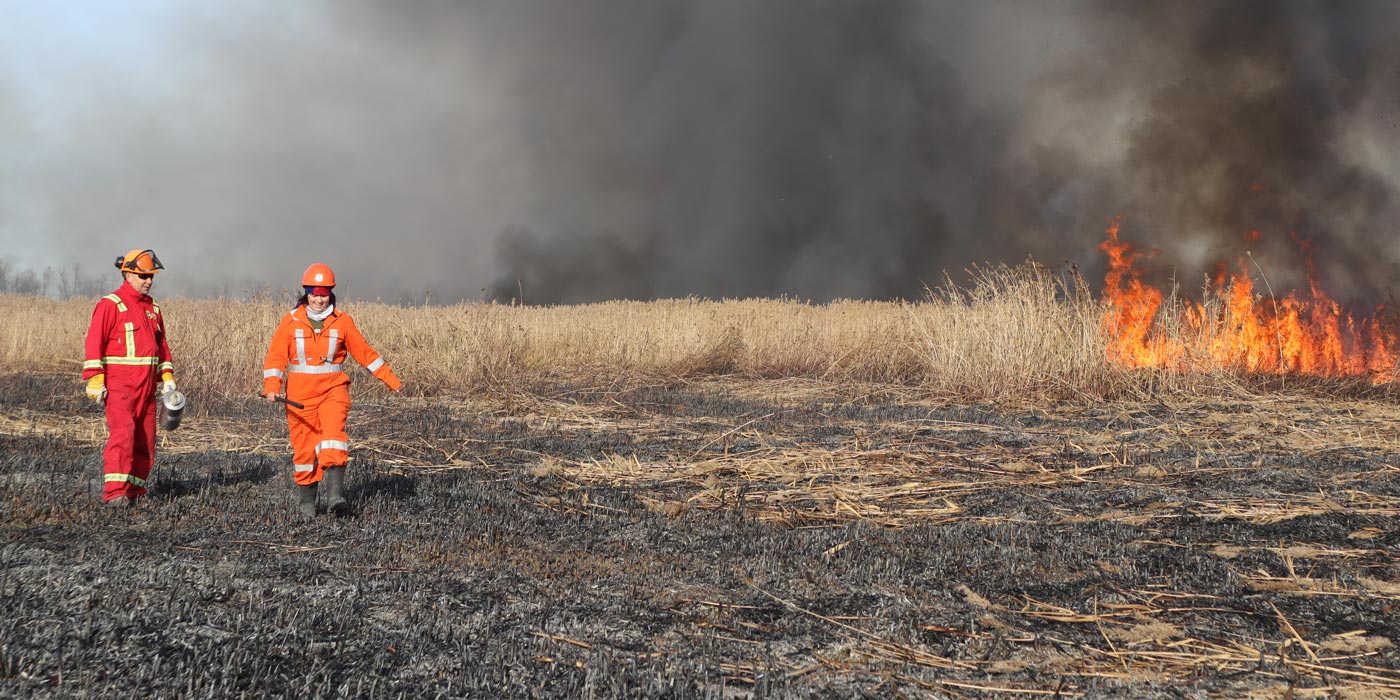About This Section
The politics and history of fire is our living history.
When we use the term “living history,” it means that we are collectively rewriting history by speaking truth to colonization.
Regardless of the geographical context in which you find yourself, your experience with fire will be shaped by historical, legal and political precedents and forces.
In this section, we pay special attention to provincial laws and policy in Saskatchewan due to the Muskrats to Moose Project Team’s focus on the Saskatchewan River Delta.
As a country (what is now called Canada) and as a province (what is now called Saskatchewan), we have a living history of past and current events associated with colonization and intergenerational effects in land and natural resource management which includes wildfire policies, laws and practices.
Indigenous-led fire practices in Saskatchewan (and other jurisdictions) cannot be looked at without considering the historical, legal and political contexts that shape the places that practice Indigenous fire history.
As we know, history did not start with Confederation in Canada (1867) and Saskatchewan (1905). Indigenous Peoples, communities and cultures survived and thrived in Canada for millennia.

2022: Father and daughter sharing knowledge of Indigenous fire practices in the Saskatchewan River Delta.
Indigenous Peoples and communities in Canada and Saskatchewan have a profound relationship with the land which supports livelihoods and cultural well-being. Co-existing with fire for thousands of years, Indigenous Peoples used fire to favourably alter landscapes for food production, hunting practices and a variety of other desirable outcomes.
However, over the decades, a number of factors have created a lack of trust and cross-cultural miscommunication between many Indigenous Peoples and orders of government about uses of fire on the land. These factors include the creation and implementation of Indian Act legislation and the reserve system;[1] the residential school system in Canada; depopulation by European diseases;[2] and unilateral appropriation of Indigenous territories, areas of interest and resources.
Colonial laws in natural resource management, fire and related environmental legislation at the provincial and federal levels of government in Canada removed Indigenous-led fire practices from the land and often severed Indigenous ties to their territories and areas of interest. This removal of their fire practices and severance of ties to the land resulted in significant changes in lifestyles and loss of cultural ways of life and diets for Indigenous Peoples, families and communities.
The lack of understanding of Indigenous title and inherent rights, particularly as it relates to Indigenous-led fire practices, is associated with 100+ years of European colonization across Canada which resulted in
- enforcing government legislation and policies on wildfire exclusion and suppression;
- advancing government-led public education campaigns, for example the “Smokey Bear” campaign;
- implementing colonial forest management practices and management objectives;
- advancing the use of English Common law that focuses on rules of behaviour established by courts and legislation for defining the minimum standards of individual and community conduct and behaviour that society will tolerate and are enforced by government;
- enduring intergenerational trauma and legacies of the residential school system in Canada; and
- restricting movement across territories through the Indian Act and reserve system.
Colonial policies, practices, structures and systems in Canada create siloed relationships between Indigenous Peoples, land, provinces/territories and the federal government. These relationships often lead to inequities between Indigenous Peoples and non-Indigenous people in Canada. Inequities have resulted in Indigenous Ecological Knowledge, Indigenous Science and individuals who carry out these ways of knowing, for example Elders and Indigenous fire practitioners, being devalued in favour of settler and state-led fire management and Western Science.
Indigenous knowledge was not given much credit as it was not “written down.” Not proven in a Western scientific way. There must be collaboration and acknowledgement of who has the knowledge of where and when to set fire.
nm’wac ininiw kiskēnitamowina nistānakacikatēw ēka “ē- masinākatēnik.” nmwāc kēcināwāk pākisimotāk isītotamowina. poko māmawi ka-wīcītowāk ēkwa ka-nistānakacikatēk awina kayāt kiskēnitāmowin tanispīk ēkwa tantē ka saskisikanīwāk.Listen to Cree
-Tim Trottier
In the spirit of renewal, new relationships and reconciliation, Indigenous-led fire stewardship focuses on local leadership, cultural revitalization, engagement and consultation with Indigenous Peoples, groups and communities when developing, applying and reporting on fire stewardship activities.
Fire practices helped shape the landscape of North America.
When you understand Indigenous fire history and contemporary fire practices from pre-Confederation until the present, you will appreciate the context for the opportunities and challenges associated with the journey of Indigenous-led uses of fire on the land in Canada and Saskatchewan in a changing climate.
[1]First passed in 1876, the Indian Act gave the Government of Canada exclusive authority over those First Nations communities who were recognized as “Indians” living on unilaterally created reserves; https://laws-lois.justice.gc.ca/eng/acts/i-5/.
[2]Tennant P. (1999). Aboriginal peoples and politics: The Indian land question in British Columbia, 1849-1989. UBC Press.
